I manage my sales organizations using a system. I didn’t always have a system. Like many sales leaders, I managed to quota, or to the number of calls, or the funnel or to some varying combination of all those. Doing this, I had a modicum of success, but it wasn’t until I learned how to put it all into a system that major success happened. My system has changed and morphed over the years, but it’s relatively simple. I’ve created a system that takes into consideration ALL the elements of sales and integrates them into a repeatable process.
My system looks like this; talent>expectations>goals>planning>inspection>coaching> review. It’s rather simple.
Talent: I hire and keep great talent. Experience, industry knowledge and resumes take a back seat. I get the best most talented people on the bus. I hire and keep people who are creative, self-directing, problem solvers, innovative and most importantly coachable. Finding and developing talent is THE most important element of my sales management approach
Expectations: With the talent in place, I set very clear expectations. I set the behaviors and attitudes I expect from every single person in the organization. The expectations act as the cultural foundation. Everyone understands what actions are appropriate and which aren’t. Behaviors are everything when it comes to organizations. The wrong behaviors will bury even the most talented of teams. The right behaviors can raise teams with less talent. Expectations are always clearly stated with no room for interpretation.
Goals: Knowing what it is we are chasing is critical. I believe every community, team, or organization needs very clear goals; objectives that point their efforts in a specific direction. Goals give teams something to measure success. I establish clear goals. We build the goals together, leveraging the expertise and knowledge of the entire team. Goals are not dictated but created. We create organizational goals, and personal goals. Everyone in the organization knows what we are going to accomplish collectively AND as individuals and how it all fit into the big picture.
Planning: We create plans; living, breathing, plans. I’ve talked about the planning process here before. Planning is a critical element in the system. It’s not OK to say you are gong to do something. We have to say “HOW” we are going to do it and “WHY.” Planning is at the heart of execution. (you can read more about how I plan here)
Inspection: Everything we commit to doing is inspected. “Inspect what you expect.” No commitments are made, no efforts started, no plans created without an inspection process behind it. Inspection means reviewing status, are we on target or not. It means evaluating the “HOW”, do changes to execution need to be made. Inspection means identifying challenges early. Inspection means owning the effort until its done and ensuring success. It’s not enough to commit to things. They have to be delivered. Inspection makes sure that happens.
Coaching: Back to people, everything starts and ends with the people. Coaching is the people side of inspection. Coaching is an ongoing effort. I continually challenge the ideas, thoughts, and premises of the team. I provide feedback regularly by giving them things to think about and through tough questions. In addition to the ongoing informal coaching, we have standing 1 on 1 coaching sessions every 6 weeks. Coaching sessions are just that, coaching. They are NOT reviews. Coaching sessions are designed to grow the talent, not measure it. (You can read more about my coaching approach here.)
Review: Review is the big tortilla that wraps it all up. Review is the inspection against the big picture. The review assesses results against the goals. It assesses the demonstrated behaviors. It assesses the execution. The review delivers big picture feedback and provides the standing of the team, the talent, and the business.
Each of the elements in the processes are all integrated, nothing stands alone. This is how I run my sales organizations. When I manage my business this way, we’ve been wildly successful. When I’ve deviated, we’ve struggled. What I’ve learned is quota, funnel, number of calls, commit, number of visits, CRM, etc are all important. BUT, managing them won’t bear fruit. To get the most out of an organization takes an integrated system that starts with the people, sets goals and expectations, monitors progress, adjusts along they way and then ends with people through feedback.
There are a lot of different ways to manage sales teams. I have seen a lot them. But, for me there is only one way, an integrated system.
How do you manage your sales organization?
